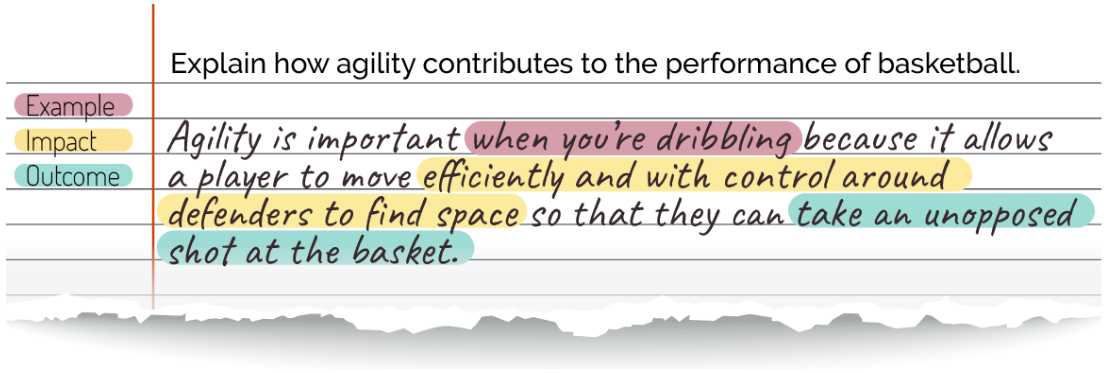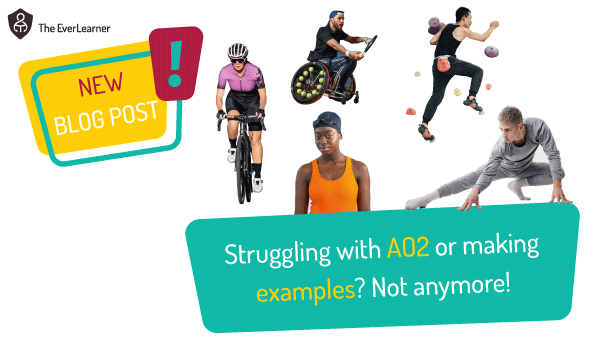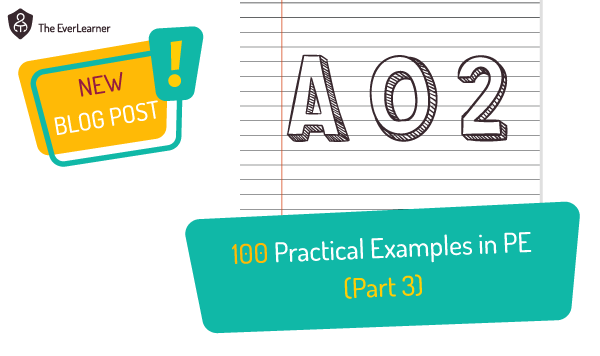A word of wisdom for revising PE and Sport students
Dear PE/Sport student,
I am writing this post to you and I am assuming that, at some point in the coming weeks, you will be sitting down to complete a PE or Sport exam for your GCSE, A-level, BTEC, Cambridge National or NCFE course. If this is the case, I want to draw your attention to one unifying theme of PE exams that can help all of you. It is this:
PE and Sport exams require students to make good-quality applications to movement, performance, sport or health and many marks are associated with this behaviour.
👂 You can now listen to our blogs. Click here to listen. 👂
Moreover, students have traditionally struggled across PE exams to perform this behaviour and marks for applications have typically been far lower than marks for knowledge, for example. This means that most PE students “know their stuff” but most PE students also struggle to apply “their stuff” to examples of movement, performance, sport or health.
Thankfully, this is not a difficult adjustment to make. What is written below is a reliable and implementable model for making high-quality examples in PE and Sport exams and I encourage you to use it from the moment you finish reading this post.
Put simply:
You, as a PE and/or Sport student, should be making your examples using the E-I-O model.
Don’t worry, it’s super simple and you will be able to do it. It works like this:
- Example: You make your example of the concept that you are writing about.
- Impact: You state the impact of the concept on the example.
- Outcome: You state what this impact causes in terms of an outcome of movement, performance or health.
So, we can look at an example here. Let’s say that you receive this question:

You should be aiming to write and answer such as this:

Look closely at the answer. Can there be any doubt that a student has followed the E-I-O model and has fully explored the example? In this case, we can summarise as follows:
- Example: Dribbling
- Impact: Efficient spatial awareness
- Outcome: Unopposed shot
Beyond this, the student has simply formed some nice sentences and the job is done.
This is what I want you to do this summer. I want you to ensure that every example that you provide progresses to an impact and an outcome. Doing this has two major benefits:
- You will score more marks.
- You will score more marks in the specific skills that other students are not scoring marks.
The second point really matters because, bluntly, this summer, in PE exams of all kinds, students will do well on their base knowledge (often referred to as AO1). Therefore, it’s hard to score a lot higher than other students simply by being more knowledgeable. Rather, what you can do is be strategic, be tactical – like Coventry City Football Club, who almost shocked Manchester United in the 2024 FA Cup semi-final by hitting them on the counter-attack; or like Chelsea FC who beat Barcelona 0-1 in the away leg of the 2024 Champions League semi-final. You can hit your competition in their weak spot!
Speaking tactically, marks for examples count extra not because they are weighted more but because other students will struggle to achieve them this summer. If you do your examples well, each time you do you will be distancing yourself from others taking the exam. Making good examples is like Happy Hour. It’s like playing your joker. It’s like getting double points (not meant literally):
- The point that you get ✅.
- As well as the point that the other students (your competitors) don’t get ❌.
This is how you can mark yourself out and get that grade that you want and deserve this summer.
Now then, you might be thinking: ok fine, but how do I get good at this? I encourage you to do all of the following:
- Download this document outlining the E-I-O method and stick it in your notes or on your bedroom wall or screenshot it and have it on your phone. Whatever: just get this guidance into your life.
- Attend my live PE and Sport revision shows in April, May and June, where I will be making hundreds of E-I-O model examples. The revision is utterly free and includes lots and lots of skills.
- Go and have a look at some of the E-I-O examples I have written to help you, as well as an article that expands on the E-I-O model.
- Finally, believe in yourself and that you can do this. Whilst I don’t want to give a pep talk in this post, I do want to tell you that students who attempt to use the E-I-O model ALWAYS score higher on their exams. Even if it is just before you are about to take that PE/Sport exam, I urge you to give this a go.
For teachers
Dear colleague,
Hopefully, this post is useful to you and your students. I am very confident to write what is included above. In addition to this, I also want to share a teacher resource in the E-I-O method with you that you may wish to download and read. In addition to this resource, I urge you to download my bank of PE practical-example cards which are available here. All resources are utterly free.
Enjoy!!
Have a lovely day.
James
%20Text%20(Violet).png)


